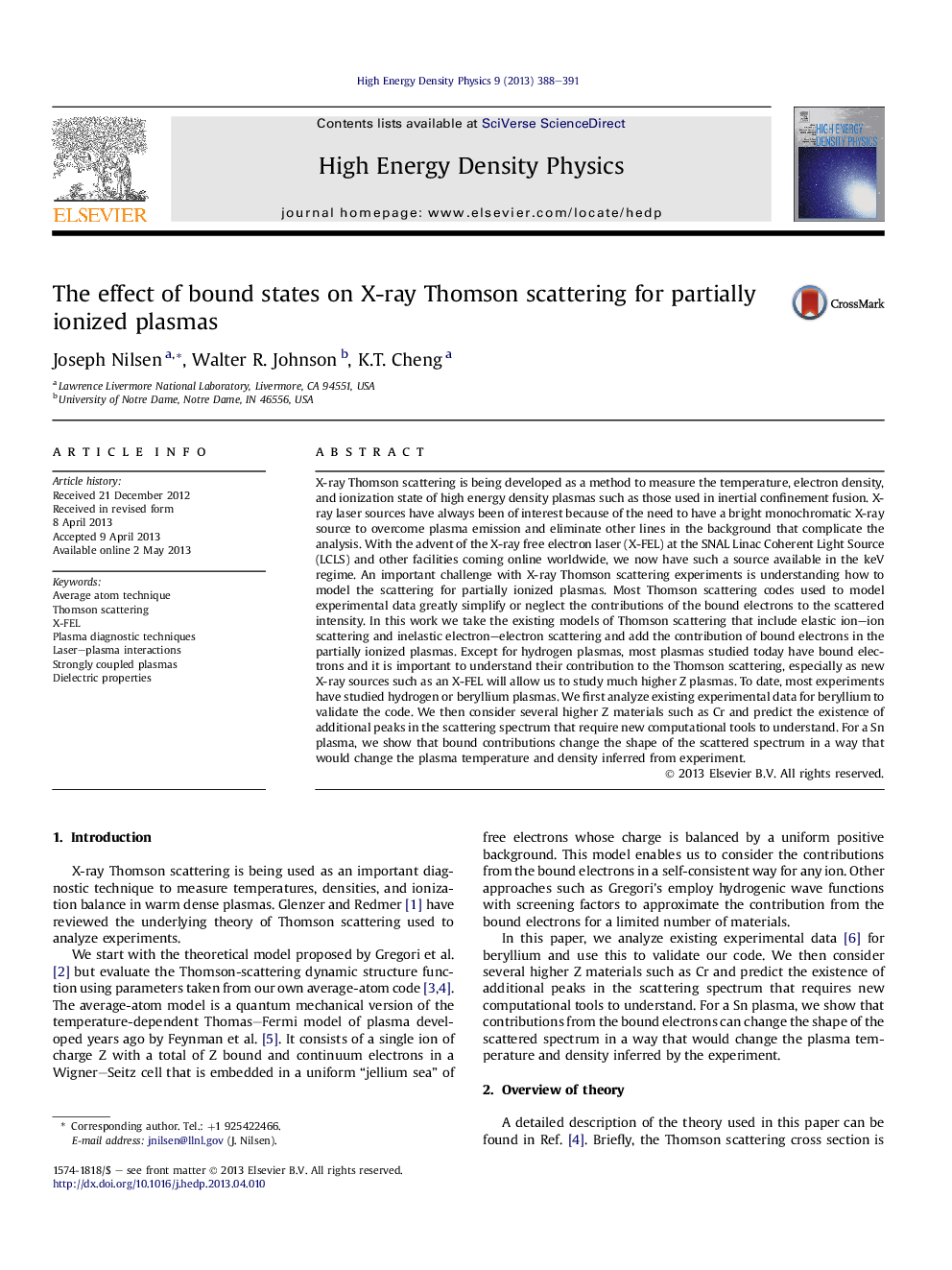| Article ID | Journal | Published Year | Pages | File Type |
|---|---|---|---|---|
| 1772451 | High Energy Density Physics | 2013 | 4 Pages |
X-ray Thomson scattering is being developed as a method to measure the temperature, electron density, and ionization state of high energy density plasmas such as those used in inertial confinement fusion. X-ray laser sources have always been of interest because of the need to have a bright monochromatic X-ray source to overcome plasma emission and eliminate other lines in the background that complicate the analysis. With the advent of the X-ray free electron laser (X-FEL) at the SNAL Linac Coherent Light Source (LCLS) and other facilities coming online worldwide, we now have such a source available in the keV regime. An important challenge with X-ray Thomson scattering experiments is understanding how to model the scattering for partially ionized plasmas. Most Thomson scattering codes used to model experimental data greatly simplify or neglect the contributions of the bound electrons to the scattered intensity. In this work we take the existing models of Thomson scattering that include elastic ion–ion scattering and inelastic electron–electron scattering and add the contribution of bound electrons in the partially ionized plasmas. Except for hydrogen plasmas, most plasmas studied today have bound electrons and it is important to understand their contribution to the Thomson scattering, especially as new X-ray sources such as an X-FEL will allow us to study much higher Z plasmas. To date, most experiments have studied hydrogen or beryllium plasmas. We first analyze existing experimental data for beryllium to validate the code. We then consider several higher Z materials such as Cr and predict the existence of additional peaks in the scattering spectrum that require new computational tools to understand. For a Sn plasma, we show that bound contributions change the shape of the scattered spectrum in a way that would change the plasma temperature and density inferred from experiment.
